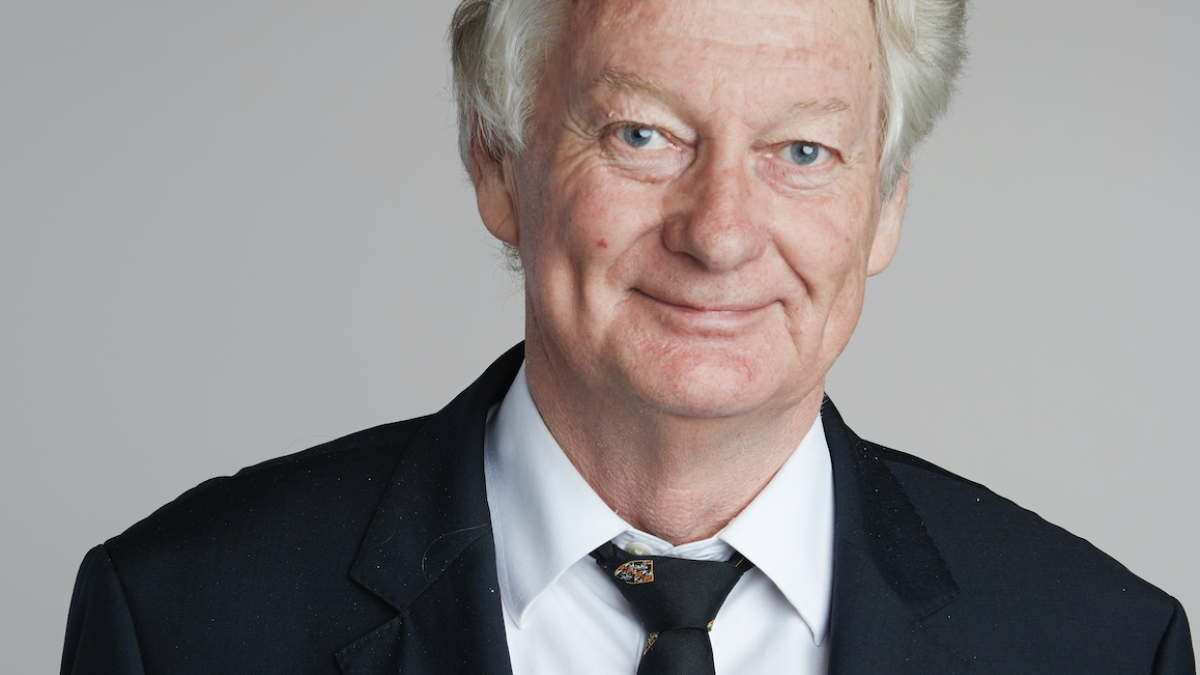ASU professor awarded top research prize by Royal Swedish Academy of Sciences

ASU Regents Professor John Spence was awarded one of the physics research community’s highest honors, the prestigious Gregori Aminoff Crystallography Prize from the Royal Swedish Academy of Sciences.
The Royal Swedish Academy of Sciences has awarded the prestigious Gregori Aminoff Crystallography Prize, one of the physics research community’s highest honors, to Arizona State University Regents Professor John Spence.
Spence and his colleagues Janos Hajdu from Uppsala University, Sweden, and Henry Chapman from Hamburg University and DESY laboratory in Germany, received the award in honor of their innovative work in the structural imaging of molecular mechanisms with powerful X-ray Free Electron Lasers (XFEL). Their work provided the foundation to see with near atomic precision molecular machines like biomolecules, a major advancement for the field of structural biology and its potential applications to improve drug targeting, pharmaceuticals and renewable energy.
The project began under the guidance of the U.S. Department of Energy’s SLAC laboratory, with the intent to come up with biological applications for X-ray lasers that were paired with the power of mile-long particle accelerators (BioXFEL). But first, they needed to overcome a formidable issue: the radiation power of large particle accelerators that was needed to see molecules at near-atomic scale often would quickly obliterate the delicate crystal samples before any data could be collected. Then, in 2000, Hajdu and Richard Neutze published a game-changing paper that theorized a way to not only record images of the mechanisms but also produce a movie showing them at work.
Then, in 2006, experimental work led by Chapman proved for the first time that it was possible to “outrun” the radiation damage by using a very short pulse of the powerful X-ray beam. These femtosecond pulses are a quadrillionth of a second. Meanwhile in Arizona, Spence’s lab was building a device for sample delivery as well as crystallographic, data-deciphering algorithms. Despite the project being high risk at the time, the appeal was undeniable as Chapman’s experiments showed potential. The complexities of the project were also clear early on, such as the X-ray laser’s instability and the sample injection device clogging like a toothpaste tube left open on a bathroom countertop.
Finally, in 2009, after almost a decade buildup, the first success came to everyone’s relief.
“Lasing is a thing that happens or doesn’t,” Spence said. “As they say, you can’t be half-pregnant.”
And just like a child, it took a village to raise — there were over 70 authors on their first major research publication.
Spence insists that the personal chemistry among the scientists was a vital aspect of the project’s success, noting that there was “a good blend of personalities. Everyone wanted to see it succeed.”
His team consisted of professors Petra Fromme, Uwe Weierstall, Rick Kirian, Alex Ros, Brenda Hogue and Bruce Doak. Fromme created the microcrystals that led to the first success of the project. Doak, Weierstall and Spence were then able to extend the recording time for the images. Weierstall built the first sample delivery device for the microcrystals, which was further refined by Doak. The chemistry of the ASU BioXFEL team even extended outside the lab — with the formation of a bossa-nova band that recorded an album and performed at the yearly BioXFEL conference.
In 2013, they secured $50 million in funding from the National Science Foundation to be dispersed over the next decade to form a seven-university BioXFEL Science and Technology Consortium. This funding gave the team the opportunity to focus on diseases that have evolved to evade the effects of antibiotics, and to make movies of proteins in action. More recently, the COVID-19 pandemic has directed the project to prioritize coronavirus studies with SARS virology expert Hogue.
“It is very gratifying to see his work recognized with the Aminoff prize," said Peter Bennett, department chair and professor for the ASU Department of Physics." The methods invented by Spence and his co-workers have already had a revolutionary impact by revealing the structures of a whole new set of biomolecules that were previously inaccessible.”
Spence joins the ranks of Regents Professor Emeritus Michael O’Keeffe as the only other ASU Aminoff Prize winner (in 2017).
With the BioXFEL grant expiring in 2023, Spence has been looking toward shaping the legacy of the project. And ASU is currently building its own compact version of the BioXFEL laser, or CXFEL, under the supervision of Spence as well as professors Bill Graves and Robert Kaindl. He plans to preserve his own legacy through his continued passion for teaching and writing, especially after the publication of his recent post-sabbatical history of science book “Lightspeed: The Ghostly Aether and the Race to Measure the Speed of Light,” published in 2019.
Written by Hannah Weisman, assistant science writer, ASU Media Relations
More Science and technology

Hack like you 'meme' it
What do pepperoni pizza, cat memes and an online dojo have in common?It turns out, these are all essential elements of a great…

ASU professor breeds new tomato variety, the 'Desert Dew'
In an era defined by climate volatility and resource scarcity, researchers are developing crops that can survive — and thrive —…

Science meets play: ASU researcher makes developmental science hands-on for families
On a Friday morning at the Edna Vihel Arts Center in Tempe, toddlers dip paint brushes into bright colors, decorating paper…

